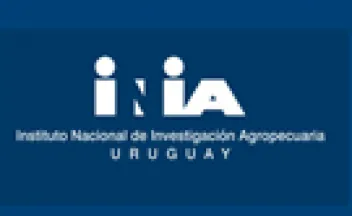Instituto Nacional de Investigación Agropecuaria
Refeeding ewes ad libitum after a moderate energy restriction during mid gestation did not affect the onset of breeding and ovulating rate of female offspring.

Abstract:Sub-nutrition during pregnancy might affect the offspring´s reproductive performance through effects on the development and function of gonads. This study evaluated a maternal energy restriction in ewes from day 48?106 of gestation, on pre- and post-weaning female lambs` performance, onset of female lambs? breeding and ovulation rate during their first breeding season.
Association of genetic resistance to internal nematodes and production traits on feed efficiency and methane emissions in Corriedale lambs. [37]-

ABSTRACT.- Potential trade-off among weaning (WWT) and yearling weights (YWT), greasy fleece weight (GWT) genetic resistance to gastrointestinal nematodes assessed by faecal worm egg account (FEC), residual feed intake (RFI) and methane (CH4) and carbon dioxide (CO2) emissions were investigated in 217 Corriedale female lambs. Improving RFI was strongly associated with lower dry matter intake (DMI) and independent of metabolic body weight (MWT) and average daily gain (ADG).
Genetic selection of feed efficiency and methane emissions in sheep and cattle in Uruguay: progress and limitations. [29]

ABSTRACT.- Residual feed intake (RFI) and methane (CH4) emissions are potential new selection objectives in beef and sheep breeding programmes to assist reaching greenhouse gas mitigation targets and to support economic, social, and environmental sustainability. Phenotyping platforms in both species are in place in Uruguay, linked with the genetically evaluated populations of main breeds (Hereford, Merino, Corriedale, Dohne and Texel), being the basis of the reference populations for genomic selection. Current progress and main findings are described here.
Genetic selection of feed efficiency and methane emissions in sheep and cattle in Uruguay:progress and limitations. [29]

ABSTRACT.- Residual feed intake (RFI) and methane (CH4) emissions are potential new selection objectives in beef and sheep breeding programmes to assist reaching greenhouse gas mitigation targets and to support economic, social, and environmental sustainability. Phenotyping platforms in both species are in place in Uruguay, linked with the genetically evaluated populations of main breeds (Hereford, Merino, Corriedale, Dohne and Texel), being the basis of the reference populations for genomic selection. Current progress and main findings are described here.
Genetic parameters for feed efficiency, gas emissions, oxygen consumption and wool traits in Australian Merino. [28]

ABSTRACT.- The purpose of the present study was to estimate genetic parameters of growing globally important traits such as feed intake, residual feed intake, methane, carbon dioxide, oxygen consumption and greasy fleece weight in Uruguay. Data of three Australian Merino generations which integrate the Uruguayan National Genetic Evaluation for sheep were recorded (from 2019 to 2021). Heritabilities and genetic and phenotypic correlations were estimated for 930 animals sired by 19 rams.
Opportunities and challenges for the integration of sheep and crops in the Rio de la Plata region of South America.

The Rio de la Plata region (Argentina, Uruguay, and southern Brazil) is currently characterized by a mosaic of intensively managed croplands and remaining areas of livestock production on native grasslands. The production of crops and animals in this scenario is usually spatially segregated as a result of mindset and structural constraints developed over decades of agricultural specialization. However, several studies have suggested that crop-livestock integration across various spatio-temporal scales can improve land-use efficiency and ecosystem services provisioning.
Paginación
- Página anterior
- Página 35
- Siguiente página
